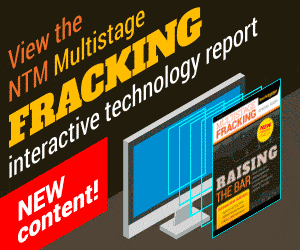Catching The Wavelength
- Details
- Category: Archived News
- Published: Saturday, 30 August 2014
Company calibrates field spectrometry to satellite imagery for remote monitoring
The colour spectrum is but a mere fraction of the total range of possible electromagnetic radiation wavelengths, and what a combination of field and orbital spectroradiometer readings can detect provides the energy sector with a powerful tool for environmental monitoring and reclamation, going far beyond what the human eye can see.
Dragging The Line
- Details
- Category: Archived News
- Published: Saturday, 30 August 2014
Drag-reducing agent improves heavy crude throughput on pipelines
By Elsie Ross
With the growth in Canadian heavy oil and bitumen production has come the requirement for increased pipeline capacity to transport that crude to market. For oilsands producers contending with discounts for their product relative to light oil, it’s crucial that pipeline transportation be as efficient as possible, with the ability to increase throughput on existing systems.
Getting The Overall Picture
- Details
- Category: Archived News
- Published: Saturday, 30 August 2014
Making use of unmanned aerial vehicles and remote sensing in the oilpatch
By Carter Haydu
Cenovus Energy Inc.’s unmanned aerial vehicle (UAV)—with its 95-centimetre wingspan, 16-megapixel digital camera, maximum cruising speed of 57 kilometres per hour and 45-minute flight time—is helping measure stockpile volumes and borrow pit volumes, is providing a bird’s-eye perspective on operations, and is already saving the company money.
Bioreaction to the GHG Issue
- Details
- Category: Archived News
- Published: Saturday, 30 August 2014
Technologies use micro-organisms to consume waste CO2
By Carter Haydu
Microbial life forms that gorge themselves on the carbon emissions from Alberta’s oil and gas industry would not only reduce the negative environmental impacts from the sector, but could also provide the province economic growth through refinement of valuable by-products of the bioreactor process.
Driving Down Downtime
- Details
- Category: Archived News
- Published: Saturday, 30 August 2014
Production at Canada’s biggest thermal oil project typically meets or exceeds design capacity—Imperial Oil explains the system behind the results
By Pat Roche
About a quarter of a century ago, a young engineer named Rich Kruger was working at what was then Exxon Corporation when he was given an assignment by one of the U.S. oil giant’s top executives. Imperial Oil Limited (roughly 70 per cent owned by Exxon, which became Exxon Mobil Corporation after acquiring Mobil Corp. in 1999) was looking at a significant increase in its proved reserves bookings at its Cold Lake thermal oil project. The Calgary-based subsidiary was talking about increasing its estimate of recoverable Cold Lake bitumen to slightly more than 20 per cent from somewhere in the teens.





